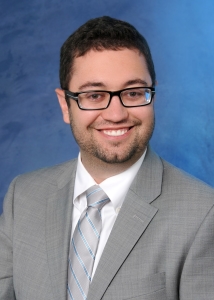By Jordan Ferguson.
With the spotlight on one high-profile battle that pits privacy rights against public safety interests, another crucial, similar dispute is making its way through the courts. How to evaluate new technology and its potential risks to privacy will be critical in determining the way we view emerging technologies — and how we fit them within existing Fourth Amendment jurisprudence.
Last week, the Sixth Circuit U.S. Court of Appeals in Tennessee held that 24/7 video surveillance of a rural farm without a warrant did not violate the Fourth Amendment. The decision was based on the defendant not having a reasonable expectation of privacy in areas that are visible to passersby on a public road. In United States v. Houston, police officers installed a video camera on a utility pole 200 yards away from Rocky Joe Houston’s rural home and continuously recorded activity for more than 10 weeks. Though law enforcement had attempted drive-by surveillance, they found this ineffective because their vehicles “stuck out like a sore thumb” at the property. Bureau of Alcohol, Tobacco, Firearms and Explosives agents, who were conducting the surveillance, sought and obtained a warrant to continue their activities after the Sixth Circuit issued an opinion in United States v. Anderson Bagshaw that expressed “some misgivings” about the constitutionality of long-term warrantless surveillance.
Stop me if you’ve heard this one before. The Houston case has facts that are virtually identical to a U.S. District Court for the Eastern District of Washington 2014 decision. The only difference between Houston and United States v. Vargas is that the decisions, despite the factual similarities, come to opposite legal conclusions. In Vargas, the court granted the defendant’s motion to suppress evidence collected as a result of 24/7 video surveillance of his front yard, ruling that this violated his Fourth Amendment right to be free from unreasonable search. The Vargas court held that the Constitution permits law enforcement officers to remotely and continuously view and record an individual’s front yard only after obtaining a search warrant to do so.
How the courts analyze this situation, and what conclusions they draw, can provide some insight into the way Fourth Amendment jurisprudence is grappling with the question of how technological developments may alter the way we view the nature of privacy. The Houston court held that Houston had no reasonable expectation of privacy in video footage recorded by a camera that captured the same views enjoyed by passersby on public roads. That court further determined the length of the surveillance did not render the use of the camera unconstitutional, because the Fourth Amendment does not punish law enforcement for using technology to more efficiently conduct its investigations. The Houston court held that, because it was possible for law enforcement to engage in live surveillance of the farm for 10 weeks, the length of time did not render the surveillance constitutionally unreasonable. The court indicated that, because law enforcement could have disguised an agent as a construction worker to sit atop the pole for 10 weeks, the Fourth Amendment must allow more efficient methods of conducting similar surveillance.
The Vargas court, on the other hand, determined that there is a reasonable expectation of privacy in the activities occurring in and around the front yard of a home, especially when the home is in a rural area and regular passersby are unlikely. To decide whether a reasonable expectation of privacy exists, the court must assess whether 1.) the person in question had an actual (subjective) expectation of privacy and whether 2.) society is prepared to recognize that subjective expectation as reasonable. The Vargas court held that society expects law enforcement’s continuous and covert video observation of an individual’s front yard must be judicially approved.
Even more strange, both decisions rely on California v. Ciraolo — where the Supreme Court permitted “plain view” observation by an officer’s naked eye — to justify their decisions. The Houston court relied on Ciraolo to indicate that, because the camera captured only views that were plainly visible, Houston’s Fourth Amendment rights were not violated. To the Vargas court, this situation is markedly different, because the surveillance was conducted both electronically and continuously. The Vargas court entertains a hypothetical similar to the “disguised construction worker” introduced by the Houston court, indicating that the time, resources, and likelihood of that officer being discovered by the defendant create a practical barrier to this kind of round-the-clock surveillance. The Vargas court concluded that this “view” is so different in its intrusiveness that it does not qualify as a plain-view observation.
These decisions lay bare the ongoing conflict in the courts over how to address privacy in an age where constant surveillance is becoming cheaper, more efficient, and less noticeable by those being watched. Other recent cases include United States v. Jones, where the Supreme Court held that the government’s attachment of a GPS device to a vehicle constitutes a search under the Fourth Amendment, and Riley v. California, where the Supreme Court held that the police may not search a cell phone seized during an arrest without a warrant.
While Vargas, Jones and Riley seem to be trending toward a view of the Fourth Amendment that recognizes the privacy risks posed by an increasingly intrusive surveillance state, Houston uses a very traditional view of the Fourth Amendment to potentially expand the toolkit available to law enforcement. As technology advances, cheaper and more efficient ways to conduct 24/7 surveillance will become more mainstream — like the use of drones, automated license plate readers, stingrays and other emerging technologies — and courts will have to grapple with how to fit these new possibilities into an existing Fourth Amendment framework. The Supreme Court will eventually address these questions of how to incorporate new technologies and greater opportunities for extensive surveillance into our views of privacy and the limits of government intrusion. Until then, we are left to view the variety of different approaches to these problems and attempt to determine how old ideas can be grafted onto the technology of today, and the applications of tomorrow.
[divider] [/divider]
 Jordan Ferguson is an associate in Best Best & Krieger’s Los Angeles office. A member of the Municipal Law and Special Districts practice groups, Ferguson is well-versed in the issues of emerging technologies and the sharing economy, conflicts of interest, free speech regulations, privacy rights, the Brown Act, public safety regulations and elections law matters. He can be reached at Jordan.Ferguson@bbklaw.com.
Jordan Ferguson is an associate in Best Best & Krieger’s Los Angeles office. A member of the Municipal Law and Special Districts practice groups, Ferguson is well-versed in the issues of emerging technologies and the sharing economy, conflicts of interest, free speech regulations, privacy rights, the Brown Act, public safety regulations and elections law matters. He can be reached at Jordan.Ferguson@bbklaw.com.





